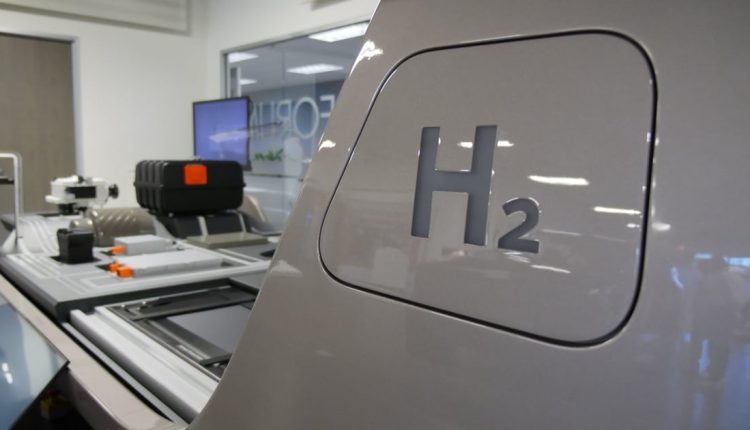“We see the market in the U.S. starting to pick up, especially as it relates to commercial vehicles,” Shappell said. “We’ve seen a lot of companies realizing that hydrogen is really the only true zero-emission option they have, so this has driven a lot of interest and a lot of activity in the hydrogen fuel cell for heavy-duty trucks and medium-duty trucks.”
Forvia is in talks to sell its commercial vehicle exhaust business in the U.S. and Europe to Cummins, it announced last week, marking a potential milestone in its ICE divestment and hydrogen growth plan.
The company, which finalized its takeover of lighting giant Hella a year ago, is aiming for $3.7 billion in hydrogen sales by 2030. Its total revenue in 2022 was $25.5 billion. Forvia declined to say what percentage of it was tied to hydrogen.
As it looks to establish its hydrogen business outside of Europe and Asia, Forvia will launch a pilot line in North America, with prototype and pre-series builds for tank and hydrogen storage systems as well as validation testing, Shappell said.
Spokeswoman Misty Matthews declined to detail the investment or where the pilot line would go but said she expects an announcement to be forthcoming.
A likely landing spot in Southeast Michigan could be the American Center for Mobility in Ypsilanti Township, 36 miles West of Detroit, where a first-of-its-kind hydrogen hub is expected to open. Reuben Sarkar, CEO of the center, has been working to diversify the state-backed testing and validation center from solely autonomous technologies to those going mainstream more quickly, such as hydrogen.
Sarkar declined to comment on “any prospective deals.”
Forvia’s hydrogen fuel technology is on the road in Europe with a commercial van by Stellantis as well as the Hyundai Xcient, marketed as the “world’s first fuel cell heavy-duty truck.”
Its hydrogen products are not in production in the U.S. A big reason is lack of infrastructure and urgency from OEMs, said Tarek Abdel-Baset, Forvia’s chief engineer of hydrogen storage systems for North America.
There are less than 50 hydrogen fueling stations in the U.S. today, with nearly every one of them in California, according to the U.S. Department of Energy. By comparison, there are several hundred in Europe, which is quickly scaling up.
The IRA, which calls for a $3/kg incentive for zero-carbon hydrogen, is fueling manufacturers in the U.S. to play catch-up, Abdel-Baset said.
“This is the first time in the U.S. we’ve seen that kind of commitment,” he said. “We’ve seen a big uptick in the quoting activity.”
Forvia is in talks with U.S.-based OEMs for hydrogen fuel systems on commercial vans to semi-trucks. While automakers are focused mainly on plug-in electric for passenger cars, batteries have their limitations, Abdel-Baset said. They are heavy and bulky, especially those with enough energy to power a big truck. That cuts into storage space, which is a major drawback for delivery vehicles. Additionally — at least with the current technology — they take longer to charge and lack the range offered by hydrogen fuel tanks, which can be filled in a handful of minutes for 400-500 miles of range.
The initial adopters of the technology in the U.S. are expected to be fleet vehicles, such as those used by Amazon, Walmart and FedEx, plus utility trucks and any companies that operate from a central hub, where hydrogen tanks can be installed.
“The first high-volume production vehicles are starting to hit the road as early as 2026 and accelerating rapidly through 2030,” Shappell said. “How rapidly remains to be seen.”


